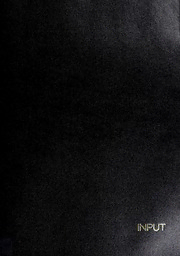
Determining the Receptivity of Unix Software in the Discrete Manufacturing Sector in the European Market PDF
Preview Determining the Receptivity of Unix Software in the Discrete Manufacturing Sector in the European Market
Report DETERMINING THE RECEPTIVITY OF UNIX SOFTWARE IN THE DISCRETE MANUFACTURING SECTOR IN THE EUROPEAN MARKET Submitted to ANDERSEN CONSULTING November 30, 1993 Submitted by INPUT The Atrium at Glenpointe 400 Frank W. Burr Boulevard New Teaneck, Jersey 07666 201-801-0050 Fax: 201-801-0441 Digitized by the Internet Archive 2015 in https://archive.org/details/determiningrecep07unse BACKGROUND AND METHODOLOGY I. A. Background MACPAC Andersen Consulting is considering porting for the AS/400 to the HP/Informix platform. Andersen wishes to understand buyer reception to such a product offering. INPUT was originally commissioned in June 1993 to conduct market research in the U.S./Canada market to gauge likely buyer receptivity. The research consisted of 125 structured interviews with discrete manufacturing firms in the U.S. and Canada. (In July 1993 INPUT conducted a follow-on study from a subset of the sample to gauge to acceptability of native UNIX versus re-engineered AS/400 manufacturing packages.) In September 1993, INPUT was requested to conduct the same research in seven European countries. This report contains the results of this European research. This report follows the same structure as the earlier report to the extent possible (including exhibit numbering) to facilitate comparisons. This report draws attention to similarities and differences that INPUT finds noteworthy. B. Methodology The questionnaires used were identical to those used in the earlier study. Respondents were qualified and categorized in the following ways: Thirty firms were interviewed from each of the following countries: the UK, France, Germany, Benelux, Spain, Italy, Sweden. This produced a total of 210 interviews. Discrete manufacturing firms were interviewed. Company sizes are shown in Exhibit 1-1. Firms interviewed planned at least one replacement for a manufacturing-related application in the next three years. [If no replacement was planned, the company was excluded from the rest of the study.] Packaged software should be considered for at least one application by those planning a replacement. Respondents should be part of the recommendation/approval process for selecting new applications. Andersen Consulting Report (YA7) Page 1 Respondents were classified by both their title level and their organizational area (Exhibit 1-2). About one-third of the respondents were from the IS area, most of them in executive positions. Almost all of the remaining interviewees came from management positions in applications or functional areas. Applications specialists, either in a functional area or in an applications, unit accounted for the remainder of the interviewees. This mix is consistent with other INPUT studies which have shown a steady migration, or sharing, or responsibilities between the traditional IS unit, end user areas and new organizational structures which address application systems needs. Respondents were quite forthcoming and frank and answered questions as completely as they could. The questionnaire was a mixture of rating questions and open-ended questions. Where there were clusters of answers in an open-ended question, these were grouped and classified. In other cases, where the number of responses were too small or responses were quite scattered, extracts of the actual replies are presented. The data which follows shows results for the entire sample of respondents as well as for individual countries where there is enough data to support individual country analysis. The convention is used throughout the report of titling country exhibits "..a" through "Jr after an initial "European" exhibit. The "European" are unweighted, that is, the results from the seven countries are added and divided by seven; Andersen may wish to apply other weights. (However, INPUT experimented with some weighting and found that it did not affect the overall results appreciably.) Andersen Consulting Report (YA7) Page 2 n. APPLICATIONS REPLACEMENT AND MARKET SIZE A. Replacement Plans Near term replacement plans are a critical factor for Andersen's plans. Exhibit II-1 shows a high degree of replacement planned in all major areas. Financial applications show the highest replacement rate. Overall, these findings are similar to that tor the U.S. Respondents were asked to assign probabilities to replacement. Probability of replacement is high, although somewhat lower overall than in the U.S. study. The situation appears to be broadly the same across individual countries. These percentages exclude those who could not give a probability; therefore, the replacement rates may even be conservative. These replacement plans are driven by a variety of factors, many of them mutually reinforcing. Exhibit II-2 has classified these reasons using the same categories as for the U.S, study. The priorities are in the same general order, although the intensity of needs in Europe appears somewhat lower than in the U.S. (Note: There was not enough data from individual countries to provide meaningful breakdowns by country.) About half the respondents are likely to use packaged software as the replacement (Exhibit II-3). Europeans appear less likely to consider packaged engineering software than U.S. firms. This picture holds true across individual countries. In the U.S. virtually all firms are considering packaged software (the figures in Exhibit H-3 are for firms that give packaged software use a probability of 75% or more). However, in Europe, for each of the applications a third or more of firms are not currently considering packaged software. Almost half the firms surveyed are in fact evaluating one or more packages now (Exhibit II-4). This is the same situation as in the U.S. Exhibit II-5 is a list of applications packages which firms were willing or able to cite as currently under evaluation. Note the wide array ofvendors; no vendor appears to have a lock on this market. (Note: Because of translation and transcription, not all of the packages ~ especially acronyms - may have been captured accurately.) Page 3
